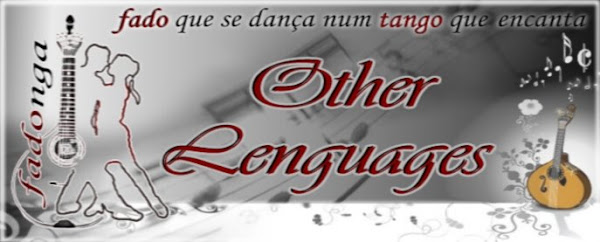ENGLISH
Two harbor cities whose geographic similarities lead to a similar existence and liveliness, one distinguished by emigration the other by immigration; in common, the same feeling of loss and misplacement induced and forced by any separation, feelings that some explore through words, others through movements, movements that become complete in the encounter between two individuals, as the words become complete in the encounter with a 12-string guitar or bandoleon bellows.
This is the very point where fado and tango come together to become one, with melodies that take us back to cherished moments of happiness as well as suffered endurances and harshness, to grandiosities lost in time yet remembered and perpetuated by the music, in the music… through a sound that those who cannot play nor sing, nevertheless dance… the freeness and expressivity of each individual distinguishes this dance from anything else, the absence of rules and choreographies elevates those who dance it to a different, unique level of communication, where words are unnecessary, where all that counts are the sentences created and whispered by the movements binding two bodies. Bodies become one in an embrace that is the very origin and force of an inner, private, passionate conversation of the soul, a conversation for two, individuals who may share little or nothing and yet live and are moved by the same emotion. The embrace becomes the door of our deepest emotions; the inner self is verbalized through the movement.
This is where the tango originates from, from within those who feel it, as the fado originates from within those who live it; those who dance and feel the tango within cannot say they feel but don’t dance the fado, because in the end both arouse feelings and emotions…whose expression and fullfilment is the dance itself.
Due città portuali le cui similarità geografiche hanno condotto ad una simile esperienza e vitalità, una distinta dall’emigrazione, l’altra dall’immigrazione; in comune, condividono gli stessi sentimenti di perdita e di trovarsi nel luogo sbagliato indotti e forzati da qualsiasi separazione, sentimenti esplorati da alcuni tramite le parole, da altri attraverso i movimenti, movimenti che si completano nell’incontro tra due individui, parole che si completano nell’incontro con una chitarra a 12 corde o i soffietti di un bandoleon.
E’ questo il punto esatto in cui il fado e il tango si incontrano per fondersi in una cosa sola, attraverso melodie che ci riconducono a felicità vissute e tristezze sofferte, a grandiosità perse nel tempo eppure ricordate e perpetuate dalla musica, nella musica… attraverso questo suono che coloro che non sanno cantare o suonare, comunque danzano … la libertà e l’espressività di ciascun individuo distingue questa danza da qualsiasi altra cosa, l’assenza di regole e di coreografie eleva coloro che la ballano ad un diverso, singolare livello di comunicazione, dove le parole sono inutili e superflue, dove l’unica cosa che conta sono le frasi create e sussurrate dai movimenti che fondono due corpi. Corpi che diventano una cosa sola in un abbraccio che è l’origine e la forza stessa di una conversazione interiore, privata, intensa dell’anima, una conversazione per due, individui che possono condividere poco o niente e ciononostante vivere ed essere mossi dalla stessa emozione. L’abbraccio diventa porta delle emozioni più profonde, il proprio io si verbalizza attraverso il movimento.
Da ciò nasce il tango, dal profondo di coloro che lo sentono, così come il fado nasce dal profondo di coloro che lo vivono; chi balla e sente il tango nel suo io non può dire di sentire ma non ballare il fado, perché alla fine entrambi scaturiscono sentimento, emozione… la cui espressione ed il cui compimento è il ballo stesso.
ESPAÑOL
Dos ciudades portuarias donde una geografía similar compele a vivencias similares, una formada por emigrantes, la otra por inmigrantes. En común, la sensación de pérdida y nostalgia que cualquier tipo de separación causa, una sensación que algunos han explorado en palabras, otros en movimientos, movimientos que si completan en la reunión de dos personas… Así como las palabras se completan en la reunión de una guitarra de doce cuerdas o en un fuelle con lengüetas.
Este es el punto donde fado y tango se encuentran, melodías que recuerdan alegrías vividas y tristezas doloridas, magnificencias perdidas en el tiempo pero repasadas en la música… Delante de tal sonido, aquel que no toque ni no cante, tiene que bailar… la plasticidad y libertad de cada uno son lo que hace esta danza algo diversa de todas las demás, la ausencia de reglas y coreografías, que nos llevan a otro nivel de comunicación donde ninguna palabra es necesaria, y lo que cuenta son las frases que los movimientos entre dos cuerpos van a describir.
De aquí nace el Tango, del interior de quién lo siente, así como el Fado, del interior de quién lo vive. Quién siente y baila el tango, no puede decir que siente pero no baila el Fado. Porque los dos, al fin, provocan sensaciones… e es por la sensación que se baila.
